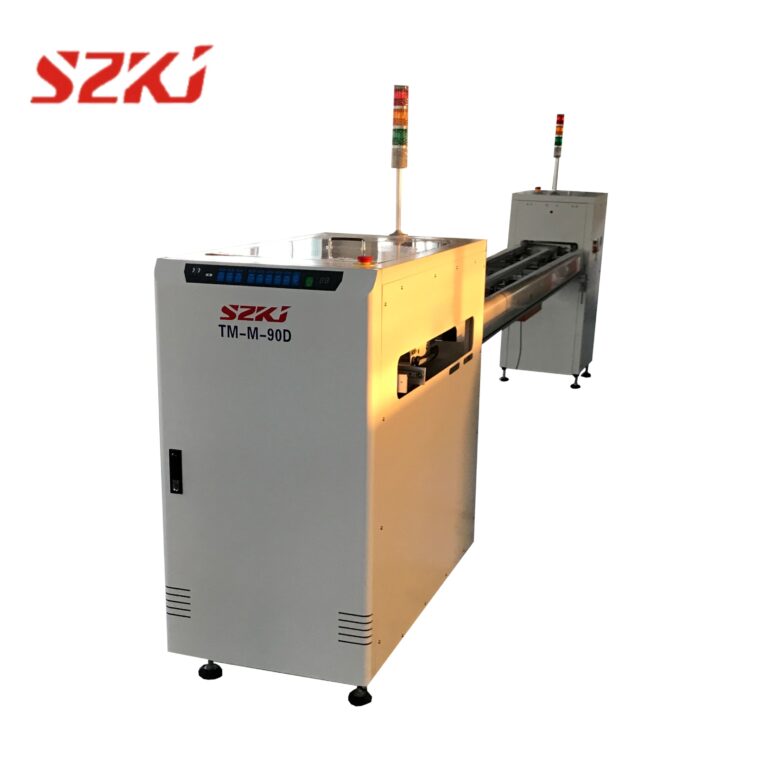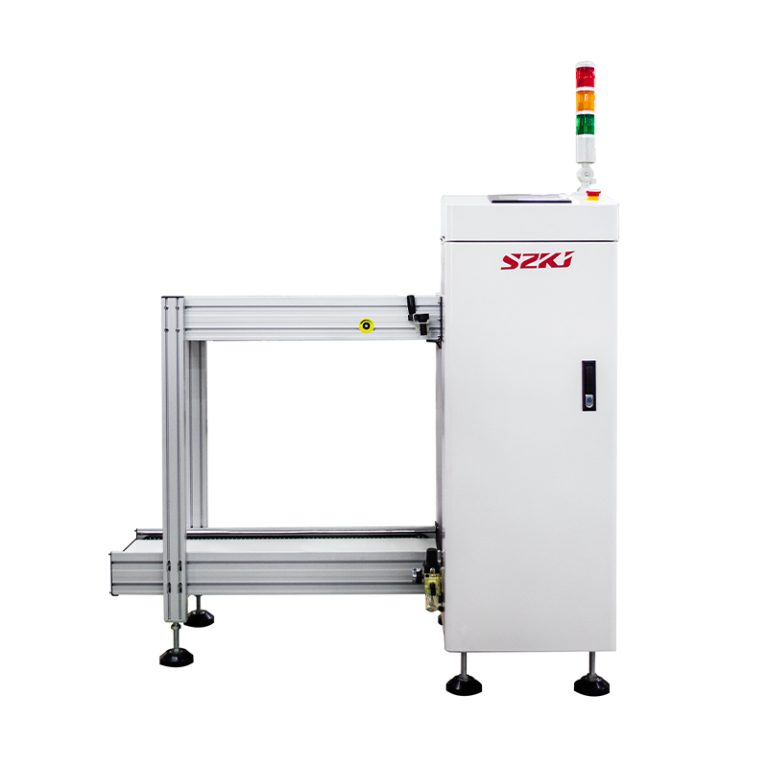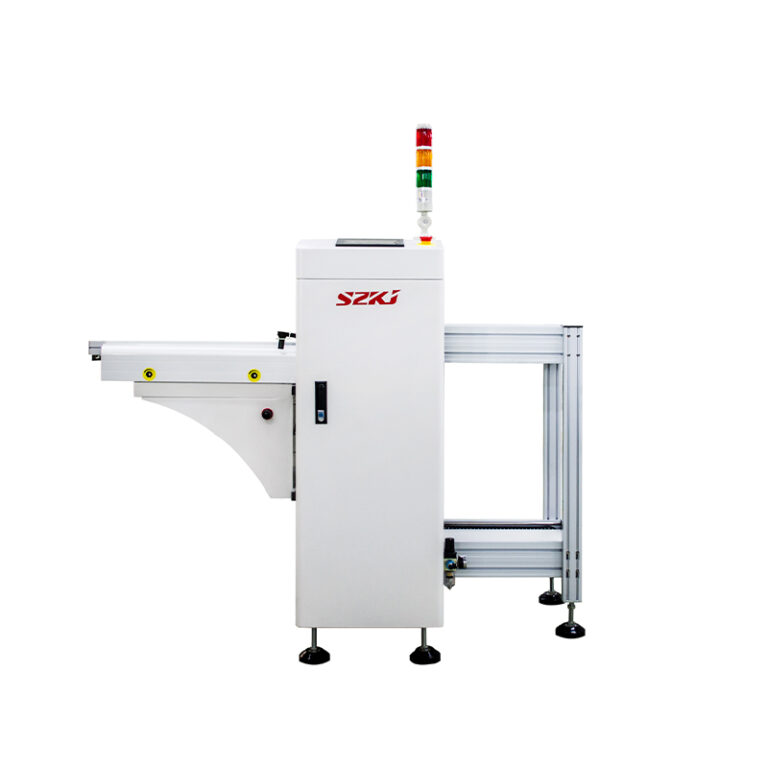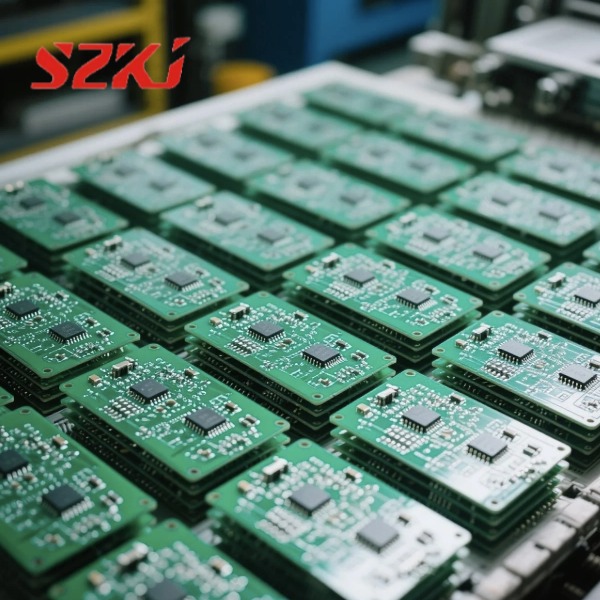Table of Contents
ToggleIn electronics manufacturing, automation equipment plays a key role in ensuring stability and speed across the production line. The Wave Solder Unloader is no exception—it is a critical machine positioned at the end of the wave soldering process, responsible for safely transferring soldered PCBs to downstream handling systems or magazine racks. When this machine malfunctions, it can quickly become a production bottleneck. Understanding the root causes of common problems and knowing how to resolve them is essential for line managers, maintenance engineers, and automation technicians alike.
What a Wave Solder Unloader Does and Why It Matters
A Wave Solder Unloader is specifically designed to automate the unloading of PCBs from the wave soldering conveyor. After boards are soldered by passing over molten solder waves, they need to be safely and accurately removed and queued for further assembly, inspection, or packaging. The unloader uses motors, sensors, clamps, and conveyors to detect, hold, and transfer PCBs without human interference.
Its role is often underestimated until issues arise. Malfunctions in the Wave Solder Unloader can lead to PCB damage, misalignment, line halts, or even thermal warping if the hot boards are not transferred quickly enough. These challenges can directly impact product quality and throughput.
Common Wave Solder Unloader Issues and Practical Fixes
Despite being robust, the Wave Solder Unloader can experience a variety of faults. Below are some of the most frequent ones, along with actionable solutions:
-
PCB Misalignment or Drop-Off
-
Causes:
-
Incorrect clamping pressure
-
Worn or misconfigured conveyor belts
-
Sensor misplacement or malfunction
-
-
Fixes:
-
Check the tension and alignment of belts regularly
-
Calibrate and test sensors to ensure accurate board detection
-
Adjust clamping mechanisms based on PCB thickness
-
-
-
Intermittent Sensor Response
-
Causes:
-
Dust or flux residue blocking optical sensors
-
Weak or unstable power supply to control boards
-
-
Fixes:
-
Clean sensors daily using anti-static wipes
-
Inspect electrical connections and test power delivery
-
-
-
Unreliable Magazine Pusher Operation
-
Causes:
-
Pneumatic valve degradation
-
Air pressure inconsistency
-
-
Fixes:
-
Replace worn valves and monitor pressure regulators
-
Add an inline air filter to prevent moisture buildup
-
-
-
Unloader Motor Overheating
-
Causes:
-
Prolonged continuous operation without pauses
-
Accumulated mechanical resistance from dust and debris
-
-
Fixes:
-
Implement cycle breaks or cooling fans for motor housing
-
Schedule preventive maintenance to clean and lubricate moving parts
-
-
Preventive Maintenance Tips for Wave Solder Unloader Stability
A proactive approach to maintenance is the best way to ensure your Wave Solder Unloader runs without unexpected interruptions. These best practices should be part of any standard SMT line maintenance routine: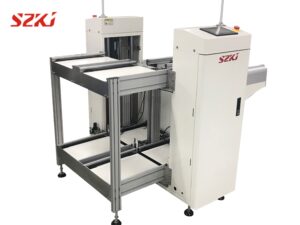
-
Daily inspections of sensors, belts, and clamps before production starts
-
Weekly cleaning of the internal structure, especially near the wave soldering section where flux and solder fumes accumulate
-
Monthly mechanical checks for alignment, vibration, and component tightness
-
Quarterly software calibration of PLCs or motion control systems to ensure accurate timing and communication with upstream equipment
This kind of attention to detail not only prevents minor issues from becoming serious but also extends the life of your equipment, improves board handling quality, and keeps the entire SMT line balanced.
How Line Design Impacts Wave Solder Unloader Performance
In some cases, the root cause of Wave Solder Unloader malfunctions lies not within the machine itself but in the overall SMT line layout. Poor conveyor handoff angles, temperature variance at the wave soldering exit, or incompatible PCB dimensions can all stress the unloader’s components.
To improve performance:
-
Ensure your Wave Solder Unloader is matched to the board size range it will be handling
-
Adjust the wave soldering conveyor’s exit speed to synchronize with the unloader’s intake speed
-
Maintain consistent environmental temperature and humidity levels near the exit area to reduce thermal stress on components
These layout and environment considerations are often overlooked but can significantly enhance long-term stability.
When Repairs Aren’t Enough: Knowing When to Upgrade
While most issues with a Wave Solder Unloader can be fixed with maintenance or part replacements, there comes a time when upgrading is more cost-effective than continual repairs. Signs that it might be time to upgrade include:
-
Frequent motor or sensor failure despite part replacements
-
Inability to handle newer, thinner, or more heat-sensitive PCBs
-
Lack of compatibility with newer automation software or MES systems
-
Increasing downtime affecting delivery schedules
Newer models of Wave Solder Unloaders often feature smarter sensor integration, better conveyor surface materials, and easier access for maintenance tasks. If your production is scaling or your board complexity is evolving, an upgrade might deliver measurable improvements in quality and uptime.
Conclusion: Keep the Flow Steady with Proactive Fixes
The Wave Solder Unloader may not get as much attention as reflow ovens or pick-and-place machines, but it plays an essential role in maintaining downstream productivity and product quality. By staying alert to common faults, implementing structured maintenance routines, and understanding the relationship between line design and machine behavior, manufacturers can avoid costly disruptions.
Whether you’re running a small production batch or managing a high-volume SMT line, keeping your Wave Solder Unloader in peak condition is critical to maintaining a seamless, efficient, and high-quality assembly process.

